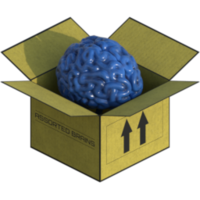One aspect being missed from the above is that procedural generation cuts costs. It makes things practical that were not otherwise practical for the same team. It is certainly possible that - replayability aside - 20 hand-designed levels could be more interesting than 20 procedurally-generated levels, given the same designers being involved in both cases. But it's not possible that, assuming a competent code team, the 20 hand-designed levels could be made in the same space of time.
Or, hire a hand full of designers and have them build about 40 maps, then let players choose a map to pick. Again, loads of *cheap* replay value.
I'm guessing from this statement that you have never hired a designer. :) They are cheaper than coders, for sure, but not so cheap that getting them to make 40 good maps is 'cheap' compared to procedurally generating them.
just hired a couple people to hand design 5 different planets in the same star system [...] It would have been the game everyone dreamed it would be.
I don't know who you've been speaking to, but I don't think there would have been even 10% of the same interest in this game if they'd said "you can explore 5 hand-crafted planets". As for factions and multiplayer... that was never what it was about. EVE Online exists for that sort of thing. If you want to understand No Man's Sky you need to understand the history of games like Elite. It doesn't gel well with the modern heavily guided theme-park experience, but that's a failure of marketing and the runaway hype machine more than anything else. I know people who really enjoy the NMS gameplay for what it is, like they enjoy other open-ended and exploration-focused games.
----------------------------------
Let me approach this from another direction. There's still a belief that procgen is somehow replacing designers when really it is about freeing them up to work on higher level aspects. Exactly the same thing happened with the art pipeline. Go back about 25 years, and artists had to place every pixel themselves. Later, they might model a character in 3D and render it out as sprites, so they would only edit pixels to clean up a render, perhaps add detail, that sort of thing - the rest was handled by the lighting and texturing algorithms. In 3D engines, it's gone even further - the artist might produce the model and the texture maps, but they don't get any control over the final pixels on-screen - they just have to trust the algorithms will render their data in a way that works for them. But freeing them from pixel tyranny means they can be more productive in other ways - changing one texture will improve multiple assets. One animation can animate multiple models. Altering a light value will affect the whole scene, environment, props, and characters. Artists gave up some fine control but can now deliver whole 3D experiences with far more content in them.
Procedural generation is the same thing for designers. Instead of designers hand-placing every wall or door, they should be able to tell the system how walls and doors should be placed, and the system does the work for them. If they build a room and want to fill it with props, they should be able to have the game auto-generate appropriate props based on the type of room. If they designate an area as a dangerous forest, the game should be able to populate it with outlaws and wolves without anyone needing to go and drop in spawn points or planned encounters. If the designer knows that orcs and elves hate each other, the system should be able to create quests based on this antagonism, without requiring a designer to manually place each scripted event and write every bit of dialogue. The tools can amplify the designer's ideas, not replace them.
Good points. I'm looking at this from the producer angle where you have to make a trade off between designer time and coder time for procedural vs. non-procedural game design. Creating a procedural level building system will cost programmer time, and the amount of programmer time it's going to cost is dependent on the design requirements of the procgen for the project. Some implementations can be relatively easy and straight forward. Others, like NMS would take a VERY considerable chunk of the project budget to correctly implement. The project resources are finite, so making a decision to spend a lot of time on a procgen system will have an opportunity cost on other aspects of the game. What is NOT being built, designed and refined because you're spending thousands of man hours building a sufficient procgen system?
If you put on the producer hat, you have to start asking some hard questions about where the best places to allocate effort are, based on the resource and time constraints you have. I think in the case of NMS, they did a great job with the procedural world generation. It's state of the art, no doubt about that. But, the game play is currently very flat and uninteresting. So, if I was the producer and I could wave a magic wand in that game, I'd commit at least another two years of design and development to build out rich game play mechanics to give the game the proper depth it needs. My prior post was trying to imagine what some of those embellishments could be. I can imagine that the executive producers and investors funding the project probably didn't have much patience left with extending the development timeline further, so the dev team probably faced a lot of pressure to finish what they had and ship the game as is. No producer has a crystal ball and can foresee these kinds of project woes a few years in advance, especially when project requirements are ever changing, and timelines slip, so it's hard to make the correct project focus and adjustments early on. I think there's a sweet spot on just the right amount of procgen, and too much, and not enough. The question to ask is how and when to identify when there's too much procgen and the risk to the project production, scheduling, and opportunity costs. What's the leanest way to get the same effect of procgen with the most efficient staffing vs budget ratio? As you said, designers are cheaper than coders, so it might be cheaper to hire an extra pair of designers to tackle a project need than to assign a few coders to it, but that will also be a function of the scope of the project need. 18 million planets? Definitely want to procgen that stuff if that's what you finally commit to.. But, let's back up a bit and revisit the requirements. Why do we need 18 million planets?! What's the underlying requirement we're trying to satisfy? How many planets could we get away with and have the same design outcome? What's the dollar cost difference? How much time would this cost? What if we do procgen for 50% of the easy stuff, and leave a designer to fill in the other 50%? Or, what if we do a 75% procgen implementation and 25% designer implementation?
I'm not saying "Don't do proc gen at all", I'm saying "Be very careful when you think about the actual time and resource costs this will incur on your project, because your resources are limited and you may do this at a cost to other parts of the game, which ultimately ends in a launch failure like NMS." A producers job is to mitigate project risks, and this is an interesting, new risk to take mitigating steps towards :)













